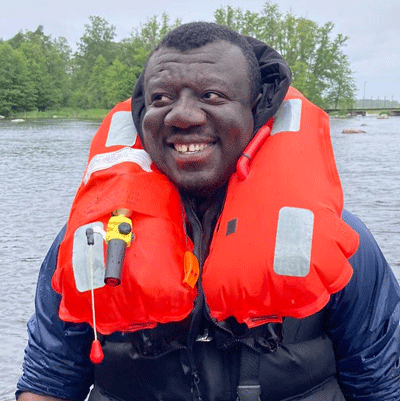project:
Oct 2023
Dec 2025
Completed
Individualbased models for regulated rivers
This project will develop and apply individual-based models (IBM) to assess how to conserve and benefit fish populations while maintaining hydropower production.
The project builds on previous successes with inSTREAM, an advanced individual-based model for salmonid fish. inSTREAM uses modern GIS-based spatial analysis and hydraulic flow modeling to simulate fish populations at high resolution. This project will focus on inSALMO, a version of inSTREAM for migratory fish, and further develop it for large regulated rivers.
The project is divided into two work packages, both using salmon and trout in the Gullspång River as the study system. The goal is to create the largest-scale IBM for salmonids ever developed. The results will be directly useful for stakeholders and managers working on the environmental relicensing of hydropower, particularly in the Gullspång River, where it is crucial to preserve unique salmonid populations while maintaining hydropower production.
The scientific advances in ecological modeling expected from this project will enhance the understanding of complex interactions between fish populations and their environment. This is especially important for predicting the effects of different scenarios, such as altered flow regimes and habitat restoration in large rivers, where field studies are difficult to conduct. In such environments, ecological modeling is often the only rational and cost-effective way to develop testable hypotheses and prioritize research questions to preserve biodiversity.
This research project is of great importance to the hydropower industry, as it aims to create tools that balance hydropower production with biodiversity conservation. As society transitions to fossil-free energy, hydropower becomes an increasingly important energy source. At the same time, damming rivers for hydropower has led to significant losses in biodiversity and fish production. To address this, new management tools are needed to assess and compare the effects of different flow scenarios. The latest IPCC report showed that society is not reducing carbon emissions fast enough to meet international targets for limiting the effects of climate change. The development of fossil-free energy sources, such as hydropower, will therefore play a more important role in meeting future energy needs.
Published results
Hajiesmaeili, M. ‘’Scaling up individual-based models for salmonid populations in hydropower-regulated rivers: key advances and challenges’’. River Research and Applications, 1-32. https://doi.org/10.1002/rra.70023
Hajiesmaeili, M, Addo, A., Watz, J., Norrgård, J., Railsback, S. F., Syrjänen, J., Blixt, M., & Piccolo, J. J. (2024). Sustaining high-value salmonid populations in regulated rivers: insights from individual-based modelling of brown trout and Atlantic salmon.
Aykanat, T., … Syrjänen, J., Janhunen, M., Leinonen, T., Prokkola, J. M., Norrgård, J. R., & Piccolo, J. J. (2024). Fast and cost-efficient species identification of Atlantic salmon (Salmo salar L.), brown trout (Salmo trutta), and their hybrids using a single SNP marker. Journal of Fish Biology, 1–5.]
Addo, L., Meneboo, L., Hajiesmaeili, M., Piccolo, J. J., & Watz, J. (2025). Drift Foraging by Allopatric and Sympatric Atlantic Salmon and Brown Trout Parr Under Rapid Flow Fluctuations. River Research and Applications.
Addo, L., Watz, J., Piccolo, J, J., Norrgård, J., Syränen, J., Railsback, S. F., Hajiesmaeili, M. (2025). Individual-based modeling of Atlantic salmon and brown trout outmigrants in a hydropeaking-regulated river: effects of minimum baseflow and gravel augmentation on smolt production. In preparation.


